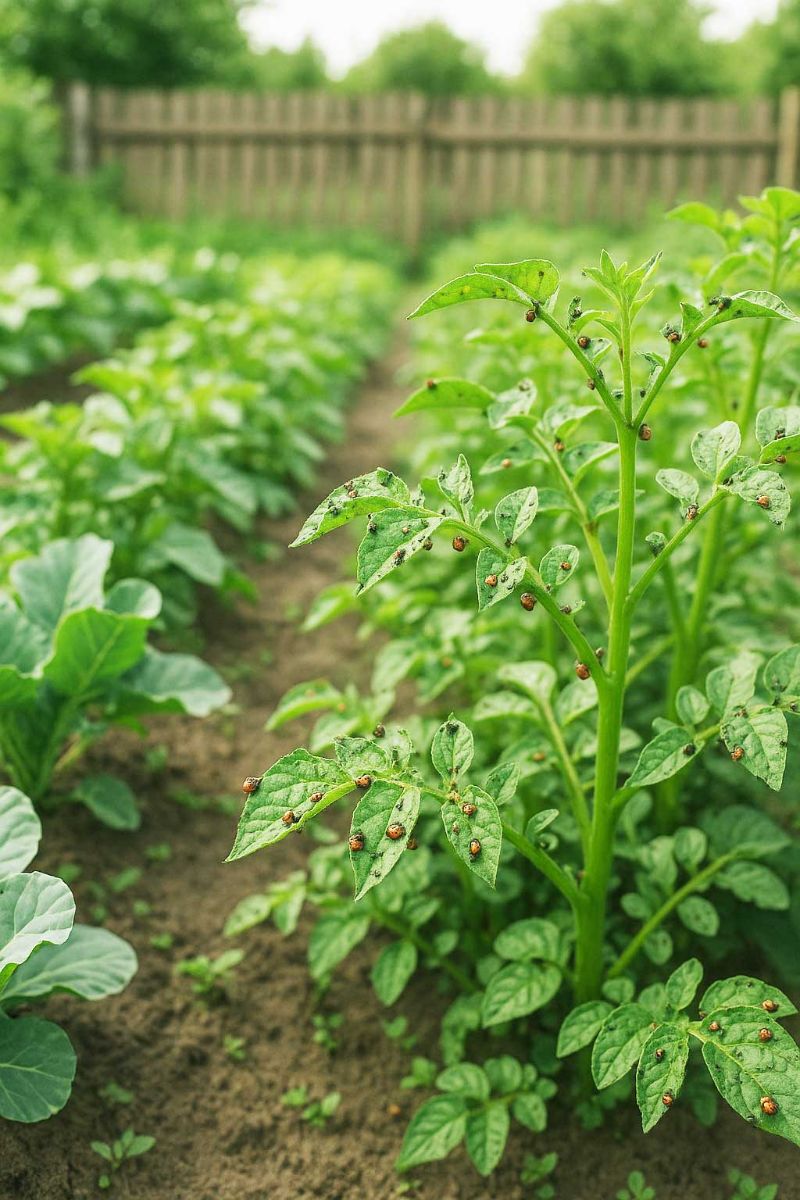1. The Surprising Household Item That Keeps Pests Away
The secret weapon my grandpa swears by is none other than baking soda. This versatile powder, commonly found in kitchens, has properties that make it an excellent deterrent for many garden pests. By sprinkling a small amount of baking soda around the base of plants, you can create a barrier that pests are reluctant to cross.
Baking soda works particularly well against soft-bodied insects like slugs and snails. These pests find the alkaline nature of baking soda irritating, which discourages them from venturing near treated plants. For best results, apply a thin layer of baking soda, approximately a teaspoon per square foot, around the plants you wish to protect.
2. How My Grandpa Discovered This Simple Trick
My grandpa discovered this method quite by accident. One summer, while dealing with a particularly bad slug infestation, he noticed that a small patch of his garden remained untouched. Upon closer inspection, he realized that this area had been dusted with baking soda from a nearby kitchen spill. Intrigued, he decided to experiment by applying baking soda around other plants, and to his delight, the pests avoided those areas.
Encouraged by these results, he began using baking soda regularly in his garden, refining the application process over time. His success with this method has been shared with fellow gardeners, many of whom have adopted it with great success.
3. The Science Behind the Method
The effectiveness of baking soda as a pest deterrent lies in its chemical composition. Baking soda, or sodium bicarbonate, is a mild alkaline substance. When pests like slugs and snails come into contact with it, the alkaline nature disrupts their moisture balance, causing discomfort and deterring them from crossing treated areas.
Additionally, baking soda can alter the pH of the soil surface slightly, creating an environment that is less hospitable to certain pests. However, it’s important to note that the amount used is minimal and does not significantly affect the overall soil health or pH balance.
4. Step-by-Step Guide to Using the Household Item in Your Garden
To use baking soda effectively in your garden, follow these simple steps:
1. Identify the plants you wish to protect from pests.
2. Measure out a small amount of baking soda, approximately one teaspoon per square foot of garden area.
3. Evenly sprinkle the baking soda around the base of the plants, creating a thin barrier.
4. Reapply after heavy rain or watering, as the baking soda can be washed away.
5. Monitor your plants regularly to ensure the method is working and adjust the application as needed.
5. Common Garden Pests That Are Repelled by This Method
Baking soda is particularly effective against soft-bodied pests such as slugs, snails, and certain types of caterpillars. These pests are deterred by the alkaline nature of baking soda, which disrupts their moisture balance and causes discomfort.
While baking soda may not be as effective against larger pests like beetles or aphids, it can still contribute to an overall integrated pest management strategy by reducing the population of more vulnerable pests.
6. Benefits of Using Natural Pest Control Methods
Using natural pest control methods like baking soda offers several benefits. Firstly, it reduces the need for chemical pesticides, which can harm beneficial insects and pollinators. This helps maintain a healthy ecosystem in your garden.
Natural methods are also safer for humans and pets, as they eliminate the risk of exposure to potentially harmful chemicals. Additionally, they are often more cost-effective, as they utilize readily available household items.
7. Comparing Traditional Pest Control to This Simple Solution
Traditional pest control methods often rely on chemical pesticides, which can be effective but come with drawbacks such as environmental harm and potential health risks. In contrast, using baking soda is a more sustainable and eco-friendly approach.
While chemical pesticides may offer immediate results, they can disrupt the natural balance of the garden ecosystem. Baking soda, on the other hand, works gradually and is less likely to cause harm to beneficial organisms.
8. Tips for Maximizing the Effectiveness of This Hack
To maximize the effectiveness of baking soda as a pest deterrent, consider the following tips:
1. Combine baking soda with other natural deterrents, such as diatomaceous earth or crushed eggshells, for a multi-faceted approach.
2. Ensure that the baking soda is applied evenly and reapply after rain or watering.
3. Monitor pest activity regularly and adjust your strategy as needed.
4. Maintain overall garden health by practicing good cultural methods, such as crop rotation and companion planting.
9. Real-Life Success Stories from Gardeners
Many gardeners have reported success using baking soda to deter pests. For instance, a gardener in Oregon shared that after applying baking soda around her lettuce plants, she noticed a significant decrease in slug damage.
Another gardener in Florida found that baking soda helped reduce the population of caterpillars on her tomato plants, allowing her to harvest a healthy crop without resorting to chemical pesticides.
10. Potential Drawbacks and How to Overcome Them
While baking soda is generally safe for use in gardens, there are a few potential drawbacks to consider. Overapplication can lead to soil alkalinity issues, so it’s important to use it sparingly.
To overcome this, always measure the amount of baking soda you use and monitor soil pH levels if you apply it frequently. Additionally, be mindful of the weather, as rain can wash away the baking soda, necessitating reapplication.
11. Why This Method Is Gaining Popularity Among Gardeners
This method is gaining popularity among gardeners due to its simplicity, cost-effectiveness, and eco-friendly nature. As more people become aware of the environmental impact of chemical pesticides, they are turning to natural alternatives like baking soda.
Furthermore, the success stories shared by gardeners who have tried this method inspire others to give it a try, contributing to its growing popularity. With its ease of use and proven results, baking soda is becoming a staple in the toolkit of environmentally conscious gardeners.
ADVERTISEMENT

